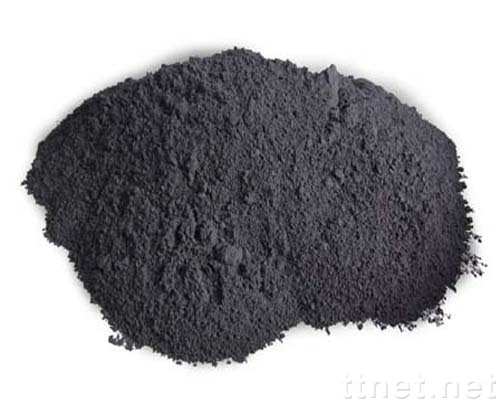

Introduction:Graphite electrode is critical components used extensively in various industrial applications. Derived from high-quality graphite, these electrodes are particularly essential in electric arc furnaces for steel production and other processes requiring high temperatures and electrical conductivity. This article delves deeper into graphite electrodes' characteristics, manufacturing processes, and diverse applications, highlighting their pivotal role in driving industrial advancements.
Characteristics of Graphite Electrodes: Graphite electrodes possess several key characteristics that make them indispensable in industrial applications:
Exceptional thermal conductivity: Graphite's remarkable thermal conductivity ensures efficient heat transfer during smelting processes, contributing to energy efficiency in electric arc furnaces.
Superior electrical conductivity: With high electrical conductivity, graphite electrodes enable the passage of large electrical currents necessary for melting and refining metals.
Impressive thermal resistance: Graphite electrodes exhibit exceptional resistance to thermal shock and can withstand extreme temperatures, making them suitable for prolonged use in demanding industrial environments.
Chemical stability: The inherent chemical stability of graphite prevents unwanted reactions, ensuring the integrity and purity of materials processed using these electrodes.
Manufacturing Process of Graphite Electrodes: The production of graphite electrodes involves a series of exact steps: a) Raw material selection: High-quality petroleum coke, blended with coal tar pitch and other additives, is carefully chosen as the primary raw material. b) Crushing and sieving: The raw materials undergo crushing and sieving processes to achieve the desired particle size distribution. c) Mixing and shaping: The crushed materials are thoroughly mixed and compacted into the desired electrode shape using hydraulic presses. d) Baking: Shaped electrodes are subjected to a high-temperature baking process, typically exceeding 2,000 degrees Celsius, which converts the raw materials into a rigid graphite structure. e) Graphitization: Further heat treatment at temperatures around 3,000 degrees Celsius imparts the desired electrical conductivity and thermal resistance to the graphite electrodes. f) Machining and inspection: The electrodes undergo precision machining to meet specific dimensional requirements and undergo rigorous quality inspections before being deemed ready for use.
Applications of Graphite Electrodes: Graphite electrodes find wide-ranging applications across numerous industries:
Steel production: Electric arc furnaces utilize graphite electrodes to melt scrap metal and refine it into high-quality steel. The electrodes act as conductive agents, enabling the passage of electricity through the molten metal.
Non-ferrous metal refining: Graphite electrodes are crucial in producing non-ferrous metals such as aluminum, copper, and zinc. They facilitate smelting and purification processes by providing the necessary electrical energy.
Chemical industry: Certain chemical processes, including the production of silicon, phosphorus, and calcium carbide, rely on graphite electrodes. These electrodes ensure a stable electrical supply for electrolytic reactions.
Electric energy production: Graphite electrodes serve as catalysts in certain fuel cell technologies, enabling electrochemical reactions that generate electricity.
Glass and ceramics manufacturing: Graphite electrodes play a significant role in glass melting and ceramic production processes, enabling high temperatures and ensuring uniform heat distribution.
Needle coke utilization: The use of premium-quality needle coke, derived from petroleum, in graphite electrode production, has significantly improved electrode properties, such as thermal conductivity and mechanical strength.
Anti-oxidation coatings: Coating graphite electrodes with anti-oxidation materials enhances their resistance to oxidation and extends their service life, reducing operational costs and improving overall efficiency.
Improved machining techniques: Advancements in machining technologies ensure precise dimensions and smooth surfaces, resulting in enhanced electrode performance and better process control.
Recycling and sustainability: Efforts are being made to develop recycling processes for used graphite electrodes, reducing waste and minimizing environmental impact.
Environmental concerns: The production and disposal of graphite electrodes involve energy consumption and waste generation. Efforts are underway to mitigate these environmental impacts through recycling and cleaner production techniques.
Technological advancements: Continued research and development are essential to further improve the performance and cost-effectiveness of graphite electrodes, meeting the evolving demands of industries.
Transition to clean energy: Graphite electrodes will play a role in producing clean energy, such as wind turbines and electric vehicles, as well as emerging energy storage technologies like lithium-ion batteries.
Sustainable manufacturing practices: Increasing focus on sustainability and reducing carbon emissions will drive the adoption of efficient and eco-friendly processes in graphite electrode production.
Conclusion: Graphite electrodes are versatile components that drive industrial advancements. With their exceptional thermal and electrical conductivity, coupled with chemical stability and thermal resistance, these electrodes are indispensable in processes involving high temperatures and electrical current. From steel production to non-ferrous metal refining and various chemical applications, graphite electrodes play a vital role in advancing multiple industries, enabling efficient and sustainable manufacturing processes.
Advancements in Graphite Electrodes: Over the years, advancements in graphite electrode technology have further enhanced their performance and expanded their applications:
Ultra-high power (UHP) electrodes: UHP electrodes are designed to withstand extremely high currents and temperatures, making them suitable for demanding steelmaking processes that require intense heat and efficient energy transfer.
5. Challenges and Future Outlook: While graphite electrodes offer numerous benefits, the industry faces specific challenges:
Volatile raw material prices: Graphite electrode production is influenced by fluctuations in raw material prices, particularly needle coke, impacting the overall cost of electrodes.
Looking ahead, the future of graphite electrodes appears promising:
Growing steel production: With the expanding construction and manufacturing sectors worldwide, steel demand is projected to rise, driving the need for graphite electrodes in steelmaking processes.
Conclusion: Graphite electrodes are versatile components that find applications in various industrial sectors. Their exceptional properties and ongoing technological advancements enable efficient steelmaking, non-ferrous metal refining, chemical processes, and energy production. With the increasing emphasis on sustainability and clean energy, graphite electrodes will continue to play a crucial role in driving industrial advancements, promoting efficient manufacturing practices, and supporting the transition to a greener future.
